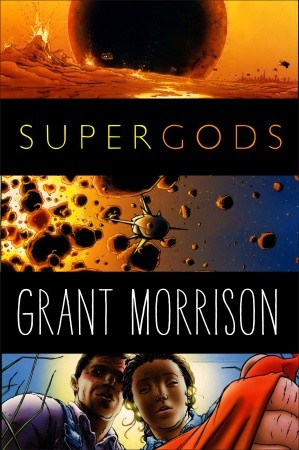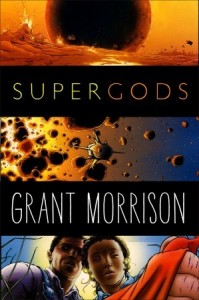Review: Supergods By Grant Morrison

Collecting comics in the ’80s, I read a lot of titles and later discovered a lot comics I read were poorly written. This is partly due to the rise of brand name artists (Todd MacFarlane, Robb Liefeld, Jim Lee, just to name a few) who became bored with sketching and tried their collective hands at plotting, with very mixed results.
Every issue was a collector issue (!) with four different glow-in-the-dark (!!), foil wrapped editions (!!!) with a unique trading card (!!!!) … well, you get the idea. Pretty packages without much inside.
It was far later that I came to appreciate visionary writers who had commanded the comics just a few years before. The difference between X-Men and Alan Moore’s Watchmen. Marvel’s Sandman versus Neil Gaiman’s Sandman. The difference between typical Batman in Detective Comics, and the story arcs in Batman Returns, by Frank Miller and Arkham Asylum, by Grant Morrison. Like contrasting a lightning bug with lightning, to paraphrase Mark Twain.

In Supergods, Grant Morrison traces the origins of comics’ major characters through their modern incarnations. Batman alone has received so many different aesthetics over the years it was hard to know whether to expect him to be campy or gritty, slick or sullen.
He ties those re-imaginings to popular culture then—in his most ambitious twist—to connect all of those cultural shifts to Iain Spence’s theory about sunspot activity, which cycles every 22 years. It’s not exact, and it’s not exactly science, but it provides a fascinating prism by which to view the world.
Morrison also describes how 9-11 threatened to diminish superheroes permanently, how they survived, and why geek culture has become nearly the same as popular culture. In essence, the fall of the Twin Towers smashed the gateway that separated fantasy and reality. The surreal became real.
It’s heady stuff, dosed with casual drug trips, occult symbols, and magical references. The theories would seem trite or confused in less skillful hands. But, like his masterpiece The Invisibles, Morrison pulls it off by constantly pushing the narrative forward (unlike his counterpart Alan Moore), urging the reader to keep up with its frenetic pace, and seemingly ready to anticipate the next big shift.
Whether that is cultural or occult or sunspots…I think only he truly knows.



